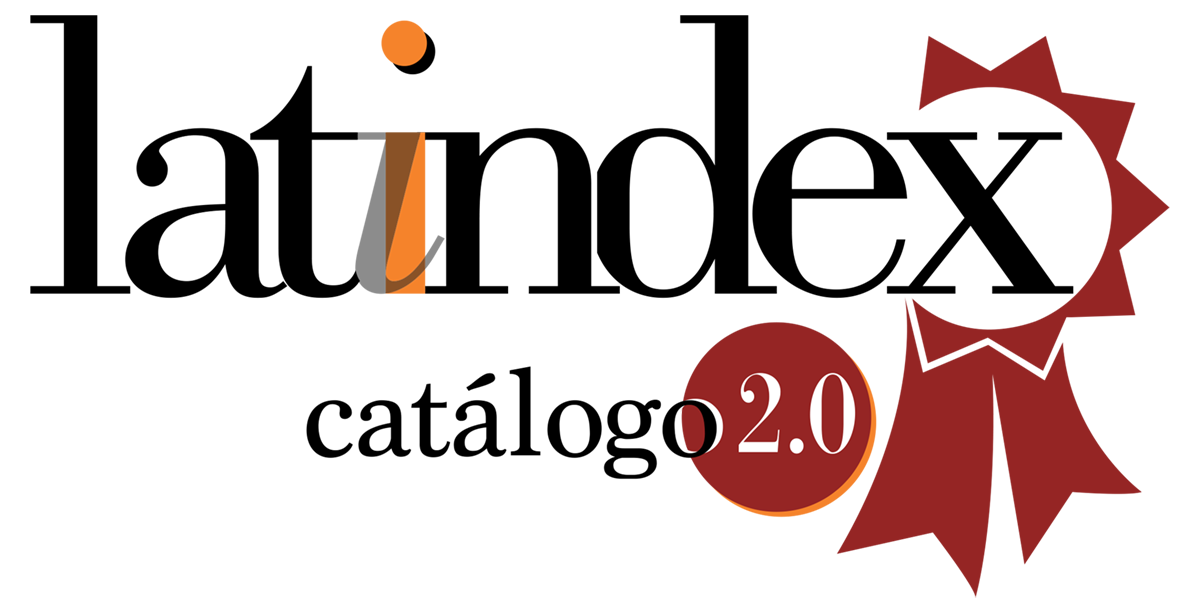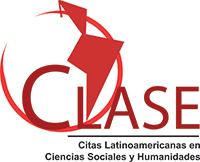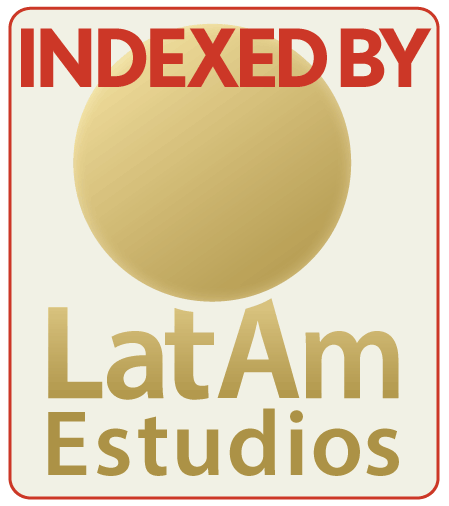Social Models in Thomas’s Tristan
Proposals from an Interdisciplinary Reading
DOI:
https://doi.org/10.24215/23139048e054Keywords:
interdiscipline, social models, christianity, courtesyAbstract
Based on the analysis of the social models of Christian and courteous morality represented in three characters from Tristan's Roman –Tristan, Cariadoc and Iseo the Queen–, roman courtois written by Thomas d'Angleterre in the 12th century, this article delves into the methodological problems manifested by the examination of literary sources from an interdisciplinary approach. To achieve this objective, the paper is based on the proposals of Jhon Van Engen around the characteristics of interdisciplinary work, as well as on the theoretical-methodological postulates established by the New Medievalism, in order to understand the literary work as a historical-literary production, which was transformed and transformed its horizon of enunciation.
Downloads
References
Améndolla Spínola, D. C. (2013). Creación del modelo de caballería a través de la cultura lúdica: producción, transmisión y recepción de las obras de Chrétien de Troyes (1165-1300). [Tesis de Maestría]. Ciudad de México, México: Facultad de Filosofía y Letras, Universidad Nacional Autónoma de México (UNAM).
Aurell, J. (2016). La historiografía medieval. Entre historia y literatura. Valencia, España: Universitat de València.
Aurell, M. (2007). La légende du roi Arthur [La leyenda del rey Arturo]. París, Francia: Perrin.
Aurell, M. y Girbea, C. (2011). Chevalerie & christianisme aux XIIe et XIIIe siècles [Caballería y cristianismo en los siglos XII y XIII]. Rennes, Francia: PUR (Presses Universitaires de Rennes).
Barthélemy, D. (2005a). El año mil y la paz de Dios. La Iglesia y la sociedad feudal (Trad. Beatriz Molina Rueda y Ma. Josefa Molina Rueda). Granada, España: Univesidad de Granada/Universitat de València.
Barthélemy, D. (2005b). Caballeros y milagros. Violencia y sacralidad en la sociedad feudal (Trad. Fermín Miranda García). Valencia, España: Universitat de València-Universidad de Granada.
Baumgartner, E. (1987). Tristan et Iseut. De la légende aux récits en vers. París, Francia: PUF (Presses Universitaires de France).
Bedier, J. (1902). Le Roman de Tristan [El roman de Tristán]. París, Francia: Firmin Didto et Cie.
Beuchot, M. (2020). Historia de la filosofía medieval. Ciudad de México, México: Fondo de Cultura Económica.
Bezzola, R.R. (1968). Les Origines et la formation de la littérature courtoise en Occient (1500-1200) [Los orígenes y la formación de la literatura cortés en Occidente (1500-1200)]. París, Francia: Champion.
Bloch, M. (1939). La société féodale [La sociedad feudal]. París, Francia: Albin Michel.
Boquet, D. y Nagy. P. (2015). Sensible Moyen Âge. Une histoire des émotions dans l´Occident médiévale [Edad Media sensible. Una historia de las emociones en el Occidente medieval]. París, Francia: Seuil.
Brundage, J. (2000). La ley, el sexo y la sociedad cristiana en la Europa medieval. Ciudad de México, México: Fondo de Cultura Económica.
Burnley, J. D. (1980). Fine Amor: Its Meaning and Context [Fine Amor: su significado y context]. The Review of English Studies, 31(122), 129-148.
Caillois, R. (1986). Los juegos y los hombres. La mascara y el vértigo (Trad. Jorge Ferreiro). Ciudad de México, México: Fondo de Cultura Económica.
Duby, G. (1964). Dans la France du Nord-Ouest au XIIe siècle: Les «Jeunes» dans la société aristocratique [En la Francia del Noroeste en el siglo XII: Los «Jóvenes» en la sociedad aristocrática]. Annales. ESC, 19(5), 835-846.
Duby, G. (2013). El caballero, la mujer y el cura. El matrimonio en la Francia feudal (Trad. Mauro Armiño). Ciudad de México, México: Taurus.
Frappier, J. (1963). Structure et sens du Tristan: version commune, version courtoise [Estructura y sentido de Tristán: versión común, versión cortés]. Cahiers de civiisation médiévale, VI, 255-280.
Gadamer, H. G. (2005). Verdad y Método, Tomo 1 (Trad. Ana Agud Aparicio y Rafael de Agapito). Salamanca, España: Sígueme.
Greimas, A. J. (2007). Grand Dictionnaire. Ancien Français. La langue du Moyen Âge. De 1080 à 1350 [Gran Diccionario. Francés Antiguo. La lengua de la Edad Media. De 1080 a 1350]. París, Francia: Larousse.
Guerreau-Jalabert, A. (2005). La culture courtoise [La cultura cortés]. En M. Sot, J. P. Boudet y A. Guerreau-Jalabert, Histoire culturelle de la France, Tomo1. Le Moyen Âge (pp. 207-258). París, Francia: Seuil.
Huizinga, J. (1955). Homo Ludens. A Study of Play-element in Culture [Homo Ludens. Un estudio del juego en la cultura]. Boston, Estados Unidos: Routledge & Kegan Paul.
Jablonka, I. (2016). La historia es una literatura contemporánea. Manifiesto por las ciencias sociales (Trad. Horacio Pons). Ciudad Autónoma de Buenos Aires, Argentina: Fondo de Cultura Económica.
Nichols, S. G. (1991). The New Medievalism: Tradition and Discontinuity in Medieval Culture. En M.S. Brownlee, K. Brownlee y S. Nichols (Eds.), The New Medievalism (pp. 1-26). Baltimore, Estados Unidos: The Johns Hopkins University Press.
Perón, G. (2016). L’origine du roman de Tristan [El origen del roman de Tristan]. Bulletin de la Société archeologique du Finistèrei, CXLIII, 351-370.
Roussel, C. (1994). Le legs de la Rose: modèles et précepts de la sociabilité médiévale [El legado de la rosa: modelos y preceptos de la sociabilidad medieval]. En A. Mountaindon (Dir.), Pour une histoire des traités de savoir-vivre en Europe [Por una historia de los tratados de saber vivir en Europa] (pp. 1-90). Clermont-Ferrand, Francia: Association des Publications de Clermont II.
Spiegel, G. (2001). Historia, historicismo y lógica social del texto en la Edad Media (Trad. Isabel Vericat y François Perus). En F. Perus (Comp.), Historia y Literatura (pp. 123-161). Ciudad de México, México: Instituto Mora.
Torres Asensio, G. (2003). Los orígenes de la literatura artúrica. Barcelona, España: Edicions de la Universitat de Barcelona.
Thomas (1990). Tristán e Isolda. En Béroul y Thomas, Tristán e Isolda (Trad. Luis Zapata) (pp. 107-155). Ciudad de México, México: Conaculta.
Tomás de Aquino (1988). Suma de Teología, Tomos I-IV (Trad. José Martorell Capó, Ángel Martínez Casado, Donato González, Victorino Rodríguez Rodríguez, Luis López de Heras, Jesús María Rodríguez Arias, Ovidio Calle Campo, Lorenzo Jiménez Patón, Manuel Morán Flecha, Jesús Hernando Franco y Ángel Martínez Casado). Madrid, España: BAC (Biblioteca de Autores Cristianos).
Van Engen, J. (1994). The Past and Future of Medieval Studies [El pasado y el futuro de los estudios medievales]. Notre Dame, Estados Unidos: University of Notre Dame Press.
Zumthor, P. (1972). Essai de poétique médiévale [Ensayo de poética medieval]. París, Francia: Seuil.
Zumthor, P. (1980). Parler du Moyen Age [Hablar de la Edad Media]. París, Francia: Les Éditions de Minuit.
Published
How to Cite
Issue
Section
License
Copyright (c) 2022 Cuadernos de H ideas

This work is licensed under a Creative Commons Attribution-NonCommercial-ShareAlike 4.0 International License.
The acceptance of an original by the journal implies the non-exclusive transfer of the economic rights of the authors in favor of the editor, who allows reuse, after editing (postprint), under a Creative Commons Attribution License -NonCommercial-ShareAlike 4.0 International (CC BY-NC-SA 4.0)
In accordance with these terms, the material can be shared (copied and redistributed in any medium or format) and adapted (remixed, transformed and created from the material another work), provided that a) the authorship and original source of its publication (magazine and URL of the work), b) is not used for commercial purposes and c) the same license terms are maintained.
The transfer of non-exclusive rights implies that after its publication (postprint) in Cuadernos de H ideas the authors can publish their work in any language, medium and format; in such cases, it is requested that it be stated that the material was originally published in this journal.
Such assignment also implies the authorization of the authors for the work to be harvested by SEDICI, the institutional repository of the National University of La Plata, and be disseminated in the databases that the editorial team considers appropriate for increase the visibility of the publication and its authors.
Likewise, the journal encourages the authors so that after their publication in Cuadernos de H ideas they deposit their productions in other institutional and thematic repositories, under the principle that offering society scientific and academic production without restrictions contributes to a greater exchange of global knowledge.










.png)

























